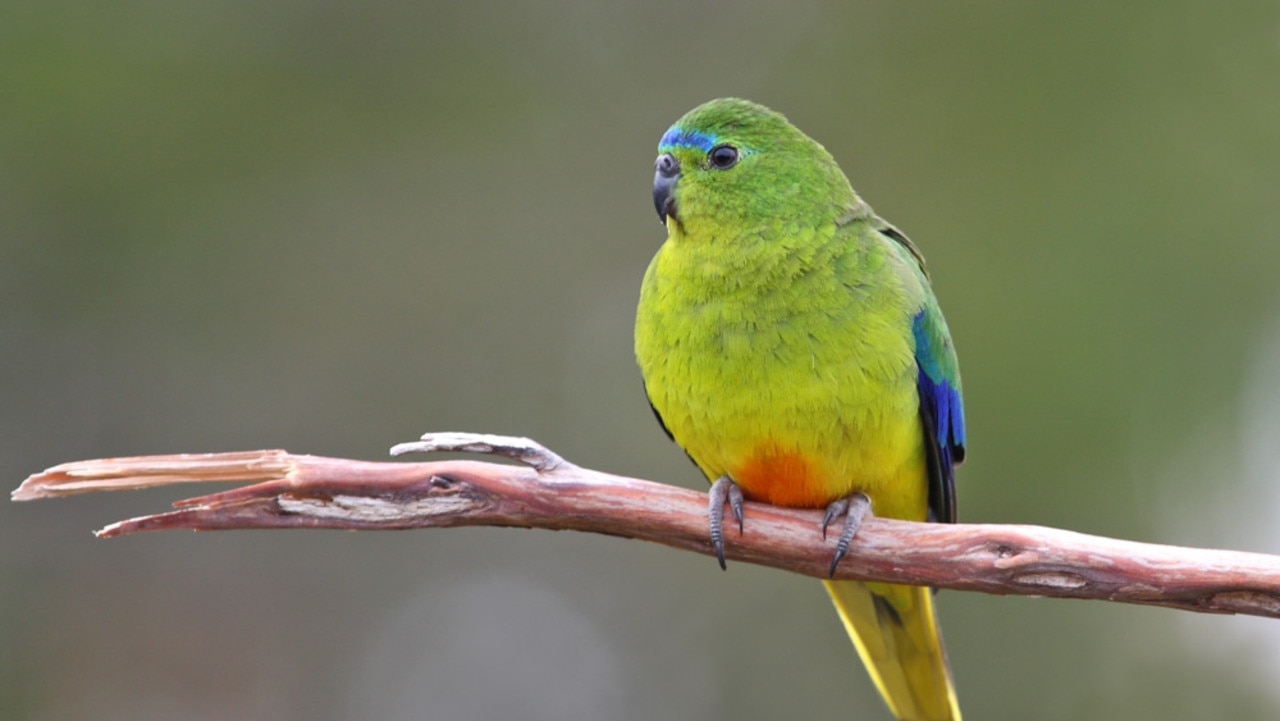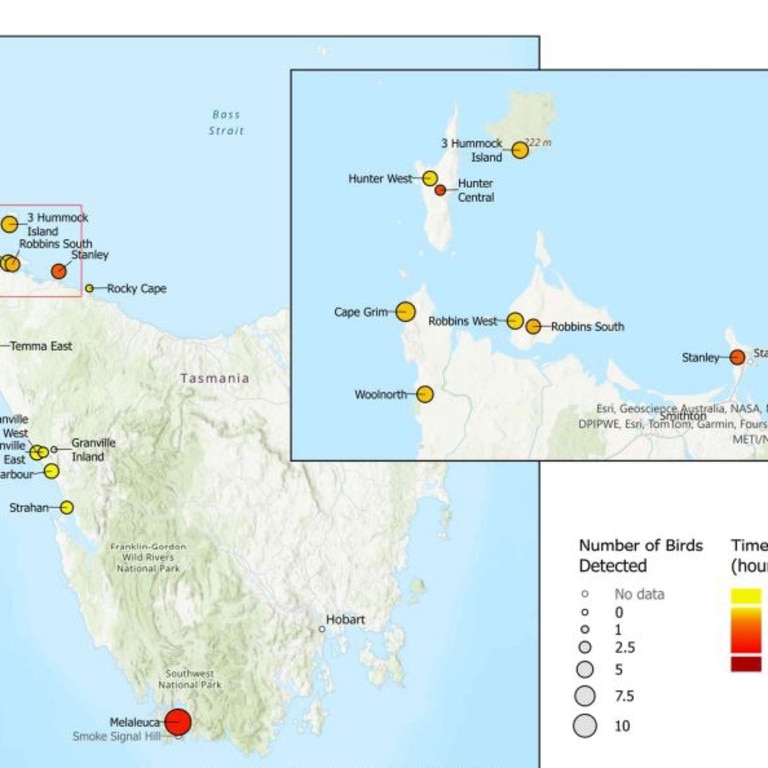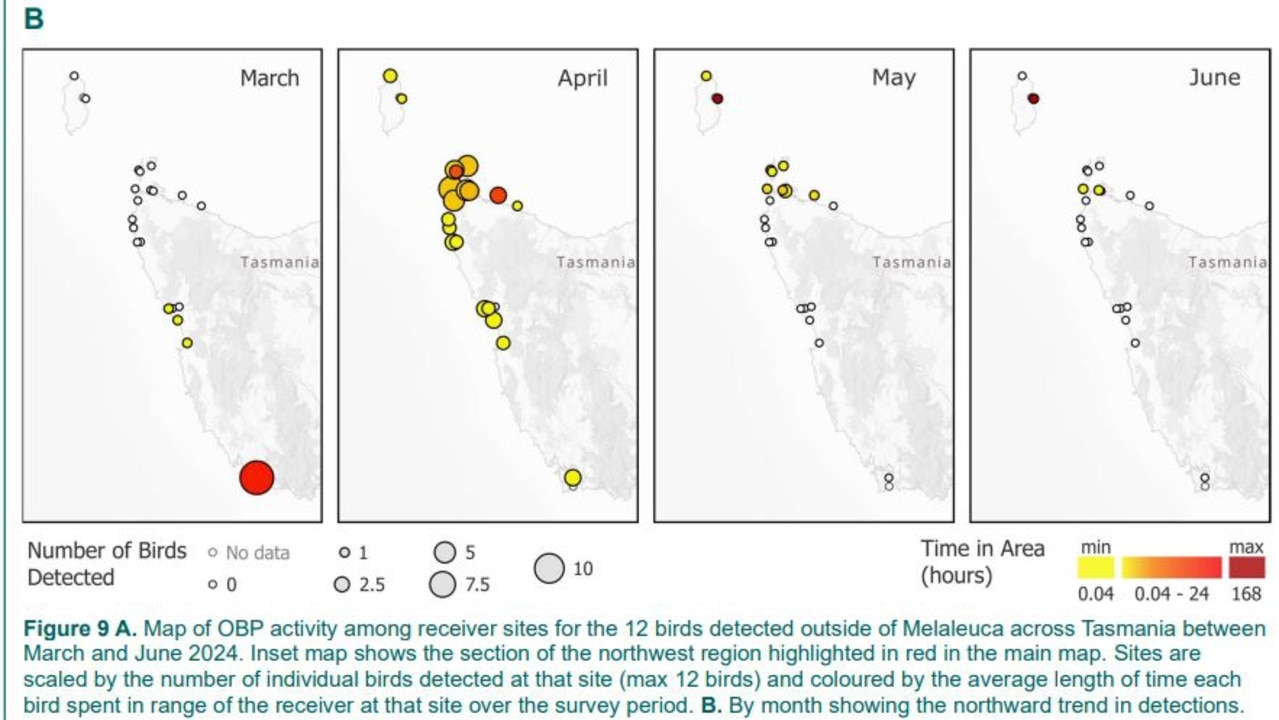‘If they land in the water they are dead’: Bird expert says five month wind farm shutdown needed to save Orange-Bellied parrots
A new report shows the critically endangered orange bellied parrot spends more time on Robbins Island than previously thought. What impact it could have on the proposed wind farm.

A new report showing the elusive and critically endangered orange-bellied parrots “had long residence times” on Robbins Island does not change plans for the developer proposing a 122 turbine wind farm on the remote island.
Over late February to- early March, 46 VHF transmitters were attached to the critically endangered OBPs and 20 VHF receivers were deployed across the migration flyway within Tasmania.
The interim orange-bellied parrot migration tracking report found based on the number of birds detected and the length of time spent in areas, the north-west region, which includes Robbins Island, appeared “to be high use areas for juvenile OBPs on migration and potentially over Winter”.
The report said 12 of the tagged birds — making up 26 per cent — being detected suggested the detection sites “were placed in core migration pathways of OBPs”.

A spokesman for ACEN, the Philippines based company behind the proposal said the data wouldn’t change plans for the windfarm.
He said long residence times could be “a number of hours or less” and the receivers detect up to 5km away, meaning the OBPs marked on Robbins Island could be located on mainland Tasmania.
Tasmanian bird expert Eric Woehler said the “internationally significant” research did have a degree of obscurity in the data in terms of actual numbers of birds and locations on the island, but it “clearly” showed OBPs are using Robbins Island during their northern migration.
“When the birds leave Melaleuca and they work their way up the west coast of Tasmania if they get bad weather or run out of energy they can put down at any point in time and have a rest, catch up and have a feed before continuing,”
He said the data reinforced the need for the five-month shut down during OBP migration which was a condition placed on the project by Tasmania’s environment protection authority, but was successfully appealed by ACEN at TASCAT.

Dr Woehler said Robbins Island was the last stop to recharge for the birds before King Island or the mainland.
“That North-West corner of Tasmania is probably the most important point on their migration because it gives them the last chance to feed up and put on enough energy reserves for the flights across Bass Strait — because if they land in the water they are dead,” Dr Woehler said.

Dr Woehler said the recent good news of a returning 92 OBPs to Melaleuca was well worth celebrating but with government agencies spending “bucket loads” of taxpayers money to protect the species “it makes for a sensible and defensible exclusion to shut down the wind farm while those birds are transiting, because clearly they do use Robbins Island,” he said.
Federal Environment Minister Tanya Plibersek is required to make a decision on the controversial project under the EPBC act. Earlier this year she delayed the time to make that decision out to March 2025.
A spokesman for the department of climate change, energy, the environment and water said the department had received a copy of the report and would consider the new information.
They said the assessment of Robbins Island Wind Farm remained ongoing and Ms Plibersek would consider all relevant information when making her decision.
A Tasmanian government spokesman stood firmly by its support of the project in response to the data.
More Coverage
Originally published as ‘If they land in the water they are dead’: Bird expert says five month wind farm shutdown needed to save Orange-Bellied parrots





